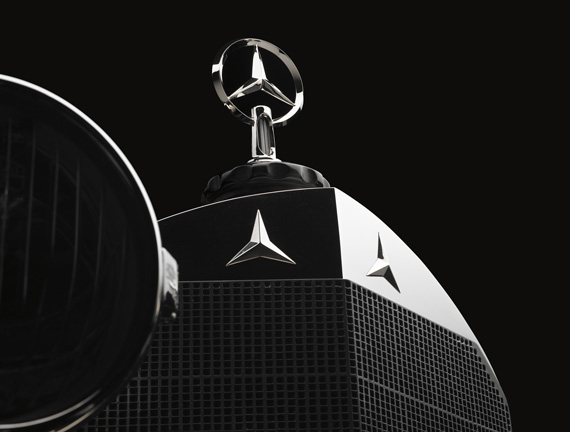
Placement, angle, lighting. It sounds so easy. But as this image of a Mercedes-Benz grille demonstrates, it is not so simple after all.
Automobile Jewelry Volume One: Mascots and Badges
By Michael Furman with Robert Strand
Order from Coachbuilt Press, Philadelphia
$100 USD
Review by Pete Vack
Michael Furman has always been a favorite of ours. His work, even when taken well out of context (for example placed within a hundred similar photos on Google Images), is easy to recognize despite frequent attempts by others, who find out it is not as easy to replicate the mood and the depth of Furman’s art as they perhaps thought. We don’t claim to be art experts ourselves, but Furman’s work is easy to grasp, understand and appreciate even for a philistine, just as anyone might easily be able to discern the differences in style, quality, and beauty between a Duesenburg when parked next to a Dodge.
We often receive art books for review, and when another large volume (10 x 12 inches, 288 pages) arrived at our offices, I thought, well, another art book. However, I noticed that this one was by Furman; and the minute the book was opened, (nay, as soon as the cover was revealed) it was strikingly clear that Furman has again upped the bar for automotive art photography.
Furman is a master of the studio set up. What work of his is published indicates a very strong sense of scene and placement, a sure and steady hand when selecting the final angle and scope of the subject matter. There, that’s it we have it, that feeling that of a million takes, this is the one that is most perfect. The lighting, background (usually dark) and highlighting augment this strong sense of space and place.The result is photographic drama at its best.
Just the selection of the subject must take a long time. How many different Alfa Romeo badges are there available and suitable for photography? How does one select from those hundreds or thousands and why? Then sit down and think; now, everything has been done before, including art photographs of the subject matter selected. How does one go about creating a photo that will instantly set itself apart from the crowd? Why should his photo merit placement in a very expensive art book? By the time one gets past the introduction, those questions are at least in part answered.
Perhaps photographing a complete image of a car is much more work but less of a problem. A full size automobile requires far more space, more lighting, different lenses and offers a million angles to be discovered, all of which would help make the work unique. But a mascot or badge is limited in size, elements, color, space, and lighting options. And since every amateur cameraman with a hi res Cannon digital has taken the same photo over and over and over again at Pebble Beach or other such events and then enhanced it in photoshop, the competition by numbers alone is immense – and like so many monkeys at a keyboard, let enough loose for a long enough time and eventually they will reproduce the works of Shakespeare.
Which brings us back to that aura of confidence and a sure feeling that what is done is right, just right. Furman’s Automobile Jewelry is just right.
Looking at lesser but well-done works on mascots and badges and one might say, “…well, yes, that’s excellent, fine,” and keep turning the pages. But so striking is Furman’s work that he stops one dead on the page, illuminating with incredible depth and intensity, often accompanied by interesting comments. Suddenly Voisin’s once cute but so-so Cocotte hood ornament comes to light in a completely new way. Having Gabriel Voisin himself tell the tale is helpful: “I immediately drew the mascot, but after I had the thing made, I soon became dissatisfied with my bit of whimsy. But despite all my efforts, the birdie has remained.” One finds out about the intricacies of the aluminum, how it was put together, and how it is a mini statement of the Voisin philosophy.
Furman forces us – force is the only appropriate word here – to take a look at a 1949 Pontiac hood ornament, which we may have seen many times in the past but never seen as Furman sees it. Then, in a rare mood of noblesse oblige, Ralph Lauren describes why the Pontiac Chieftain mascot held such a fascination for him: “For me, it’s a personal symbol of the spirit of the American West, a consistent inspiration through my design life and in this cowboy’s heart.”
Furman’s work is amplified by such texts throughout the book. He finds the guys with the eyes; Winston Goodfellow, Robert Cumberford, this writer’s old editor Westley Petersen, Bruce Meyers, Peter Mullin, Richard Adatto, Fred Simeone, Everett Anton Singer, Jonathan A. Stein, Paul Russell, Ed Welburn and many others to provide commentary on the cars, mascots and badges. A special mention is warranted to a woman with a great sense of art and style, Teckla Rhoads, Executive Director for Global Industrial Design at GM. She began her career as a lettering specialist, designing emblems and nameplates. Fittingly, Rhoads wrote the introduction.
One need tread no further into the book to find the Frontispiece and a superb example of not only the art of the mascot but the art of Michael Furman. The mascot is from a 1933 Pierce Arrow; the art “Tireur d’Arc” by William Schnell. Artist and photographer together create a svelte, mobile, bold, and incredibly beautiful work. It is as much Furman’s as it is Schnell’s, for it would be lost and blanched on the field at Pebble Beach; but in the office of Michael Furman, Schnell’s sculpture comes alive.
Most badges, emblems and even mascots are designed to be recognized and related to at a quick glance. Furman has found the 1908 Nicklausse emblem to be art in art; a scene within a scene, beckoning the dawn of motoring and the motor car in a most unusual fashion. Furman places the image on page five, the second image in the book after the Frontispiece. There is a reason for this.Along those lines, we enjoyed a Chrysler badge from 1933 with a group of Roman bundle of sticks and ax, a fascist symbol to accompany the name of the Chrysler Imperial, a faux-pas similar to that of naming of the Studebaker “Dictator” in 1927-1937.
A bit on organization; an editor with more order and less passion would have placed the birds with the birds, the bees with the bees and Griffins with Griffins, goddesses with goddesses. Furman is an editor with passion. Where there is no order, it can also be said there is no disorder, at least in this case. There is a grouping pattern but it is not readily coherent. The placement of the images seems more driven by their artistic compatibility or contrast than a concern over order. There is no table of contents; there is a list of illustration page numbers by make, but they too can be both scattered and grouped.
Perhaps this is unintentional plus, for one must simply just sit back and enjoy page after page rather than look for that elusive Ferrari badge or seek reason and logic in the layout.
The cost is $100, not bad for the quality of the art, the reproduction, the paper, and binding. It’s a car art book we’ll bet you will actually take off the shelf once in a while.
Want to learn how he does it? A video worth watching…
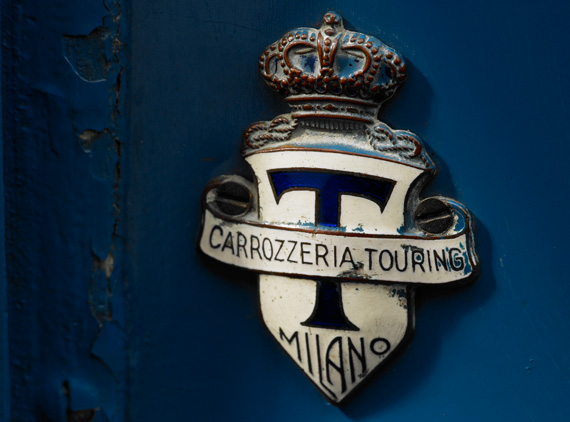
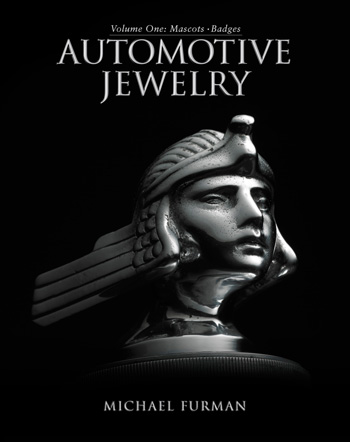

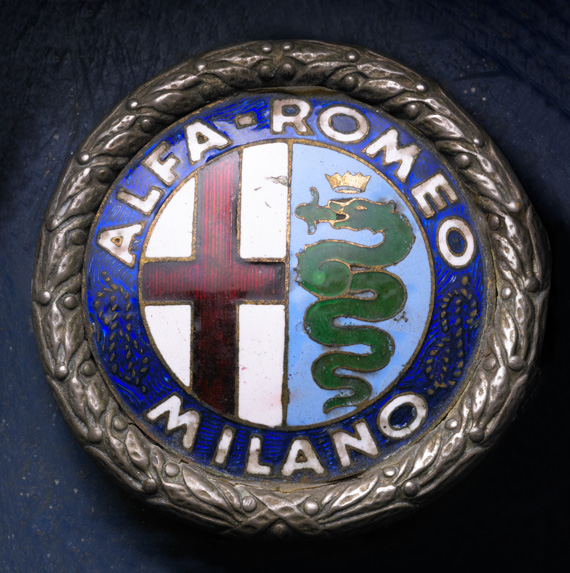
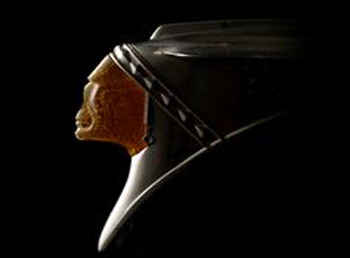
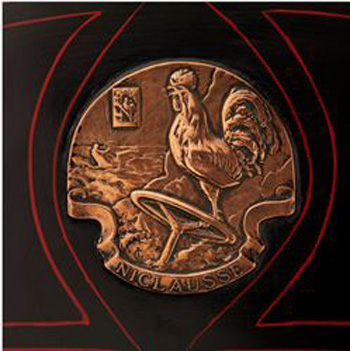
I still have the radiator cap ( a Lalique glass cat) from Herb Loziers Delage which I bought from his estate in the 1950’s. Herb was the scion of the Lozier car company
family. He was a good friend.
That Delage (which was in the French pavillion at the 1939 Worlds Fair) is the subject of submission which is longer than the small box which is allowed for comments such as this one. I would not like to be cut off in mid contribution.
i knew herb lozier and the 1939 delage and spent many an evening at his house in brooklyn talking cars.does anyone know where the delage is now?
A group of us teens from the neighborhood used to hang with Herb Lozier at his house on E21st Street and learned about the classic cars he was restoring and writing about . . . There was always another rare and unusual car in the garage to admire and sometimes get to ride in . . . I got to ride in his Delage several times, as that was his ‘personal’ car . . . Frankly, it rode and sounded like a truck but, it was very glamorous to look at . . .
Herb was a meticulous model builder, replicating complex automobile designs out of craft paper while his herd of cats roamed the rooms freely . . . He loved cats . . . .
I went off to college and Herb sold the house and moved out to ‘The Island’ (Nassau County) and we lost touch . . . Later on, I heard from friends that he passed on and that he had sold the Delage beforehand . . . RIP Herb . . .